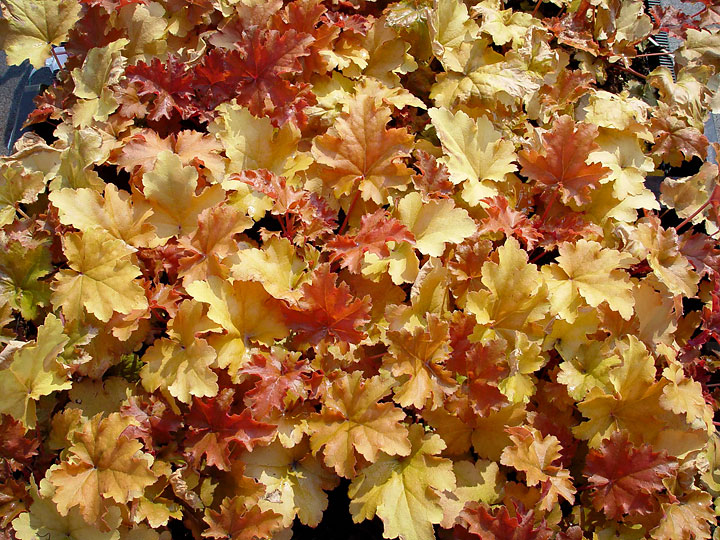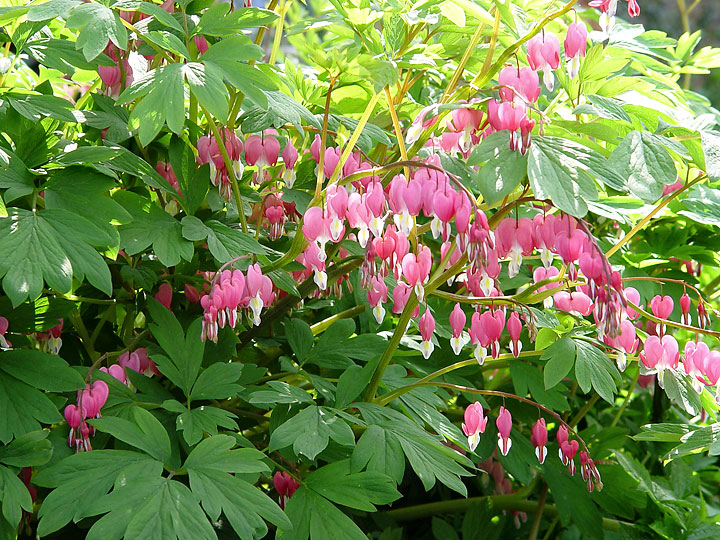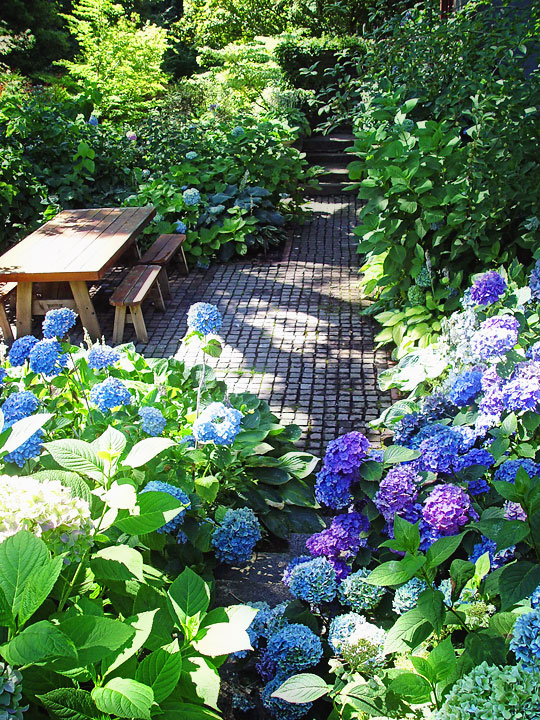
The bright treasures of the shade garden often come from our nation’s most beautiful forests. Beneath the canopies are perennials that evolved to grow and bloom on the forest floor, which botanists call the understory. Here the litter of leaves, thin soils and root competition caused by so many trees may be similar to your own yard’s shaded spaces. What you plant there likely came from the forest floor, and these treasures really flourish when you offer similar soil conditions.

The leaf litter accumulation is known as a duff layer, which is the natural mulch for shade plants. Recreate this protective layer using Black Gold Garden Compost Blend and Garden Soil. It’s equally useful for amending poor soil and clays with organic matter that improves drainage.
Of all the understory perennials, four top choices offer color, romance and elegance to shaded beds and borders…
Heuchera
Today’s Heucheras and are by far the most exciting group of new cultivars. Breeders have crossed western native Heuchera species with the traditional coral bells. The result are new varieties that not only bloom extravagantly, but their foliage color is nothing short of outstanding. Here you’ll find mounds of vivid foliage in reds to purple, black, gold and many shades of green for color long after flowers fade.

Bleeding Heart
From Asian forests come the old-fashioned bleeding heart (Dicentra spectabilis), often the first flower of spring. This frilly perennial is the most romantic shade bloomer with wands of dangling heart-shaped pink flowers. These nod and sway in the slightest breeze adding gentle animation to shaded nooks in the garden. This species was also bred to our western native Dicentra to expand flower colors into dark red and white.
Columbine
No flower can compete with the elegance of columbine (Aquilegia spp.), which is found in northern forest around the globe. Those we grow in gardens are hybrids of European species crossed with our many natives to produce a wide range of flower size and color. They also attract bees and hummingbirds.
Bigleaf Hydrangea
Perhaps the hottest shade garden plant is bigleaf hydrangea (Hydrangea macrophylla), the big leaf or mop head type. It brings early summer color to shade gardens with a bonus of blue or pink flowers to cut and dry. This is a great problem solver for beds and borders lacking much sun. Beware that mature hydrangea flowers are so fabulous they are routinely stolen from front yard plantings.

When you set out to bring color to your shaded garden, there is less light to make the foliage and flowers stand out. To increase visibility, plant groups of the same variety in small drifts or masses. Before planting, recreate the forest floor conditions by mixing lots of compost into your soil, or amend it on a plant by plant basis in each, individual hole. Once all are in the ground, spread a thick layer of mulch around each plant to create your own duff. Above all, remember that trees are greedy and applying water in the heat must be enough to please them and these colorful denizens of the understory too.

